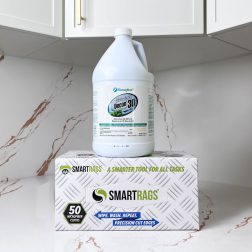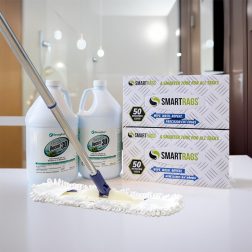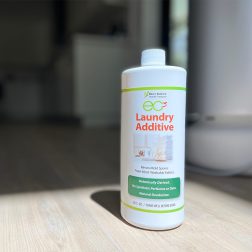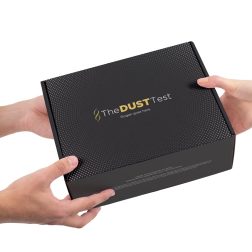No products in the cart.
Mold Resources
What is Aspergillus Penicillium?
Aspergillus/Penicillium are both fungi members of the family Aspergillaceae. With 592 accepted species of Aspergillus and over 350 species of Penicillium, this group of mold is wide-ranging. Aspergillus and Penicillium are incredibly opportunistic, meaning that they can pose health risks to those who are immunocompromised. While they are types of mold, the spores of Aspergillus and Penicillium are so similar that it can be impossible for analysts to differentiate between them during testing. For this reason, mold tests will often group the two as a single unit, Aspergillus/Penicillium, in the test results.
What Does Aspergillus/Penicillium Look Like?
Given how common Aspergillus/Penicillium is in the environment and how many species fall into these two categories, their growth appearance can vary widely. Growth can appear white, yellow, brown, or even black. Colonies can appear as greenish-gray flat patches or more elevated and textured.
Bonus Tip: Aspergillus and Penicillium also produce volatile organic compounds (VOCs), so pay attention to your nose! If you notice a musty, earthy, cigar-like odor (that typical mold smell), this can signify a potential hidden issue.
What Conditions Do They Grow Best In?
When growing outdoors, Aspergillus/Penicillium is often found on dead or decaying plant matter. Indoors, it can grow on a wide range of organic building materials or household items, including wood, textiles, cellulose materials (paper drywall backing), carpeting, painted surfaces, or spoiled foods.
Is Aspergillus Penicillium Mold Dangerous?
Since these are common and occur naturally in various outdoor environments, exposure is equally common and often does not produce negative health effects. Aspergillus/Penicillium, however, are very fast-growing species of mold, usually reaching maturity within 3-4 days and capable of producing significant volumes of spores. Because of this, when they grow in indoor environments, significant exposure occurs and can trigger a wide range of health issues. Those with compromised immune systems are particularly at risk.
Health effects from exposure can present as something as general as a typical allergic response but also become more intense and lead to an infection like Aspergillosis, depending on the species present. Aspergillosis is primarily a chronic respiratory infection, but in those with compromised immune systems, the infection can spread to the brain, heart, kidneys, or skin. Severe symptoms can include fever, chills, shortness of breath, a cough that produces blood, chest or joint pain, headaches, and skin lesions. Less severe symptoms of exposure can include asthma-like issues with the respiratory tract and allergy-like issues with the sinuses.
What to Do If You Suspect Aspergillus or Penicillium
Your first step will be to test the dust within your home.
The Dust Test:
The Dust Test will help you know if there’s a problem before spending thousands of dollars trying to find one (both medically and in your home). And, if there is a problem, the data will indicate what you’re being exposed to before your inspector comes so that you can ensure they will find where it’s coming from.
Traditionally, inspectors conduct dust testing while they’re inside the home. By the time the results come back, though, they’re long gone and working for the next client. This can confuse you and wonder if they really "got it all" while collecting data. With The Dust Test, we help you identify the mold, bacteria, and biotoxins in the home that the inspector needs to find sources of. This data is crucial for successful remediation protocols because it provides the information needed to properly remove all sources of contamination from the home and ensure you and your family have a healthy environment that supports ongoing well-being.
The sooner you find and remediate the contamination, the less exposure you’ll face, and the less likely it is that another problem will develop elsewhere.
If you’re experiencing chronic symptoms, you should also contact a qualified medical professional familiar with helping clients who are dealing with environmental exposures so that they can help you on the path to healing.
Showing the single result
Tools For Preventing Aspergillus or Penicillium
Showing all 3 results
-

Mold & Bacteria Contents Cleaning
Remove harmful pollutants that accumulate in the dust of your home. (Options available for renters...
-
$99.00 – $349.00 SHOP NOW -

HomeCleanse Cleaning
Take your cleaning to the next level buying all the tools we use to keep...
-
$299.00 – $549.00 SHOP NOW -

EC3 Laundry Additive
Add EC3 to every rinse cycle to rinse away mold, bacteria and musty odors from...
-
$23.00 SHOP NOW
Still Have Questions?
A member of our team is here to help! Click on “Get Started ➤” below to book a consultation with a member of the HOMECLEANSE team. We have a few quick questions that will help us put together a roadmap to solve or prevent all of your mold problems.
Two minutes of your time could lead to better health for you and your family.
Resources:
- The current role of Aspergillus and Penicillium in human and animal health
- Featured Mold - Aspergillus and Penicillium - Indoor Science
- Aspergillus | Mycology | University of Adelaide
- Penicillium Sp. | Viticulture and Enology
- Aspergillus and Penicillium
- Aspergillosis - Symptoms & causes - Mayo Clinic

